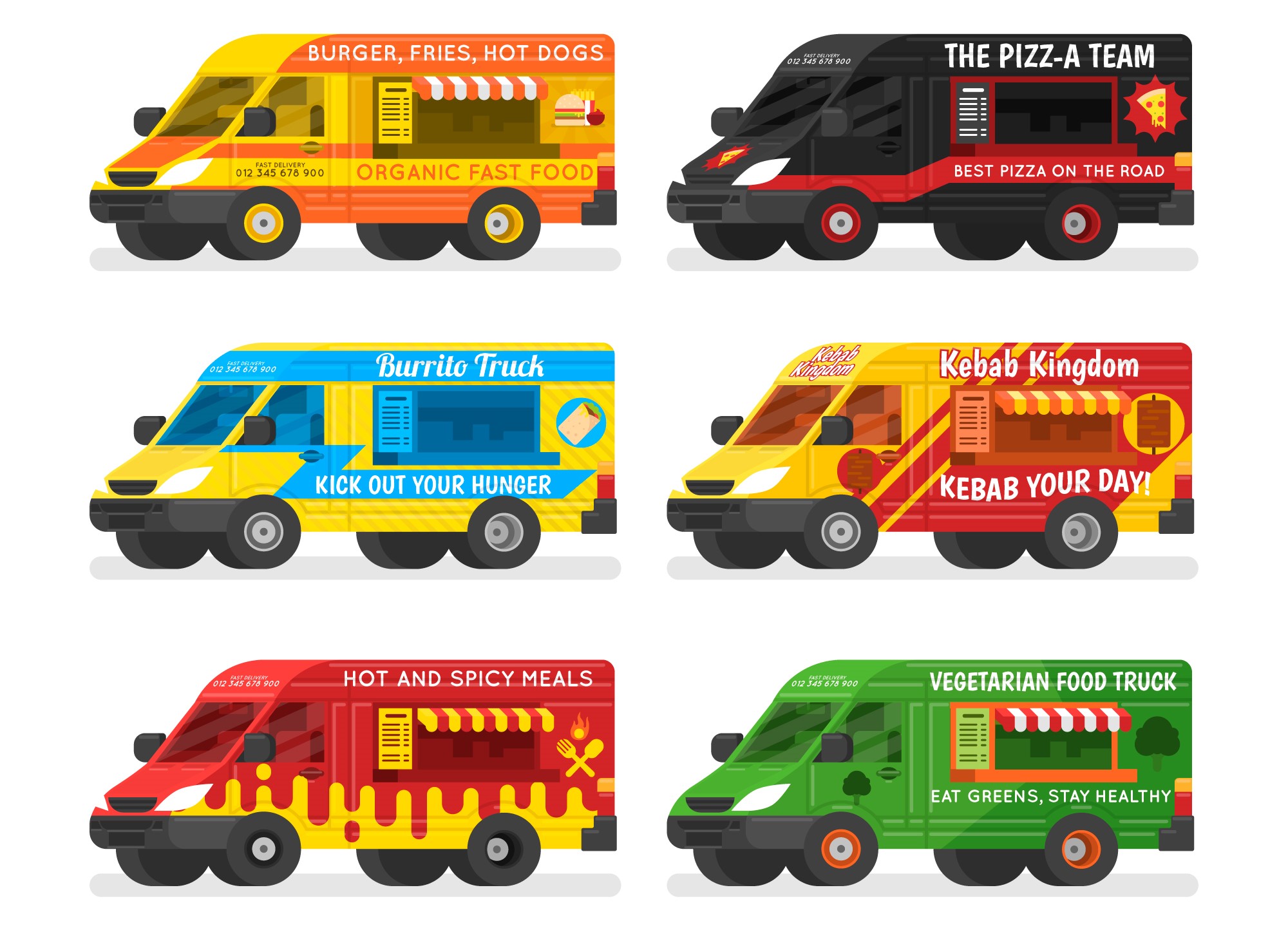If you’ve ever seen a food truck with a bold and eye-catching design, you know it stands out. Having a great wrap can set your food truck apart, attracting customers and showing off your brand’s personality.
So, how can you design that perfect wrap? Let’s go through 12 essential tips to help you get it right.
1. Know Your Brand
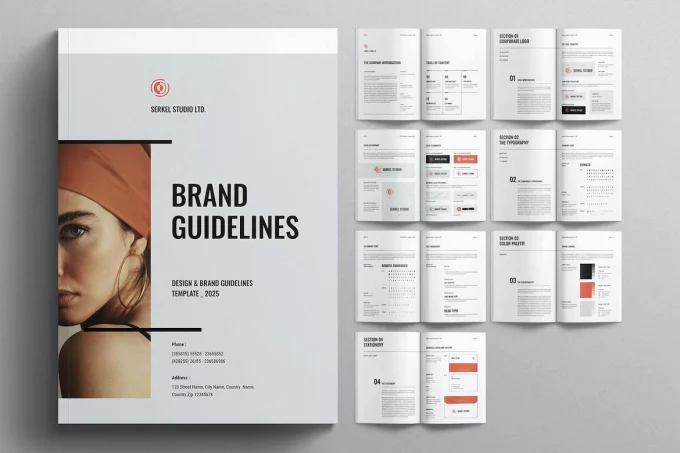
Before designing your food truck wrap, take a moment to define your brand identity. What’s your food truck all about?
Is it fun and quirky, or is it more upscale and refined? This will influence everything from your color palette to the imagery you use.
Remember, people often connect with the brand before the product itself, so hiring a professional to develop a cohesive brand identity and style guide can be a valuable investment.
2. Keep It Simple
When it comes to your food truck wrap, less is often more. A simple design with limited colors and clutter can have a stronger effect than a complex one. As a rule of thumb, use no more than three fonts and three main colors. This approach keeps your truck looking clean and professional.

3. Choose Eye-Catching Colors
Color is powerful and can convey emotions quickly. For example, red and yellow can stimulate appetite, while blue can be calming. According to research, certain colors can influence buying behavior.
Thus, choose colors that not only represent your brand but also attract customers.
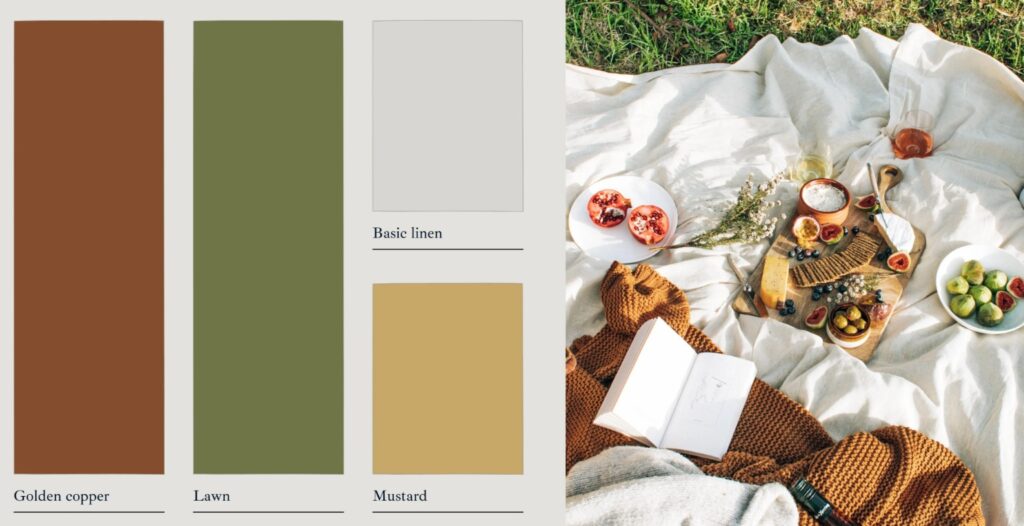
Color Psychology
Colors have the ability to evoke specific emotions and influence behavior. Red, for example, is associated with excitement, passion, and hunger, making it ideal for food brands looking to create urgency and appetite.
Yellow is cheerful and grabs attention, which is why many fast food chains use this combination to draw people in.
Green, on the other hand, suggests health, freshness, and sustainability, perfect for food trucks that focus on organic or plant-based offerings.
Blue, while calming, is less commonly used in food marketing as it’s believed to suppress appetite. Understanding color psychology can help you choose a palette that speaks to your target audience while promoting the right mood.
4. Use High-Quality Images
Images tell your story without saying a word. Make sure any photos used are high-resolution to avoid pixelation. High-quality images not only look more professional but can also entice potential customers to drool over your delicious offerings.
5. Size Matters: Use Large Fonts
Your food truck is constantly moving, so visibility is key. Use large fonts that are easy to read from a distance. The main purpose is for customers to quickly know what you offer. A food truck might only get a few seconds of attention while passing by, so make every word count.
“80% of customers will notice a food truck’s colors and graphics before anything else.”
6. Find the Right Wrap Material
When it comes to materials, pick durability over just aesthetics. Look for weather-resistant vinyl that can withstand rain, sun, and wear. For example, a high-quality wrap can last around 5-7 years with proper care. This means less hassle and cost for you in the long run. Here are some popular options:
- Perforated Vinyl (For Windows) – Covers windows without obstructing the view, adding extra branding space.
- Cast Vinyl Wraps – Durable, conforms to vehicle curves, and lasts 5-7 years. Great for long-term use.
- Calendered Vinyl Wraps – More affordable but less flexible, lasting 3-5 years. Ideal for flat surfaces and temporary wraps.
- Gloss Vinyl – Shiny and eye-catching, resembling car paint. Requires regular maintenance.
- Matte Vinyl – Provides a sleek, modern look with a non-reflective finish. More subtle and sophisticated.
- Metallic Vinyl – Offers a shiny, luxurious look with a metal-like finish. Perfect for high-end branding.
- Carbon Fiber Vinyl – Adds texture with a high-tech appearance, mimicking carbon fiber.
- Chrome Vinyl – Highly reflective and attention-grabbing, but more expensive and harder to install.
- Reflective Vinyl – Enhances visibility at night, ideal for late-night operations.
7. Showcase Your Menu
Make your main offerings or signature items visible on the wrap. This helps people know what they can order. Use images of your top dishes along with short descriptions. People love visual cues, so showcase what they can expect to taste.
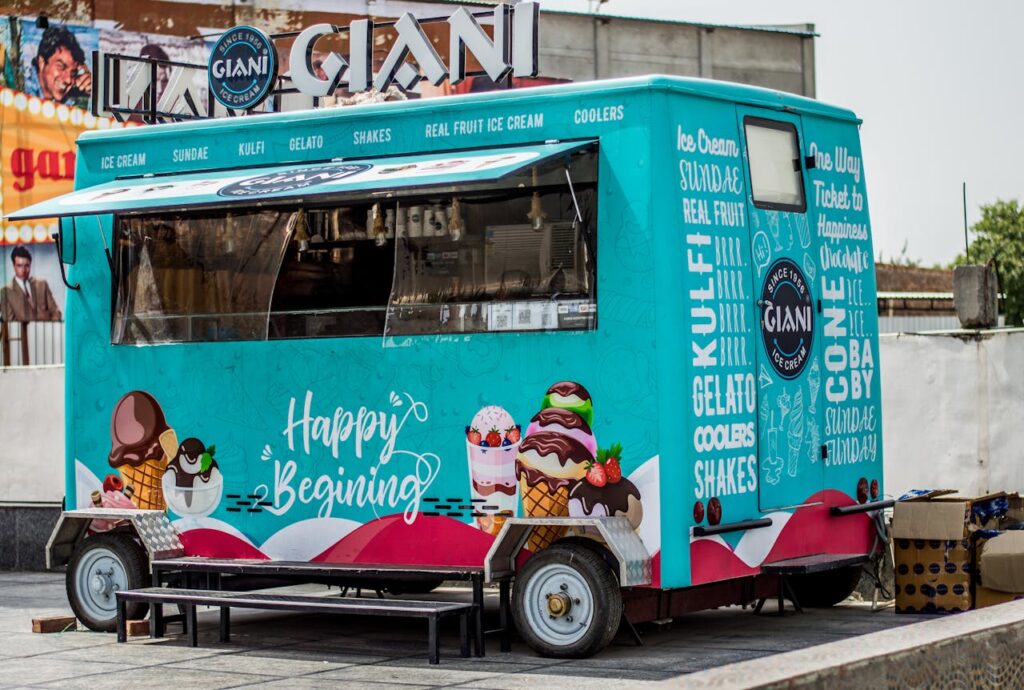
8. Don’t Forget to Include Your Contact Info
While your wrap should visually attract customers, it’s also essential to give them a way to connect with you. Include your social media handles and website URL if you have one. Customers may want to tag you on Instagram or reach you to find where you’ll be next.
9. Reflect on Your Menu Style
Your food truck wrap can serve as a preview of what’s inside. If you’re serving gourmet, high-end dishes, choose design elements that reflect sophistication. On the other hand, if you’re selling street food, a fun, vibrant wrap would fit better.
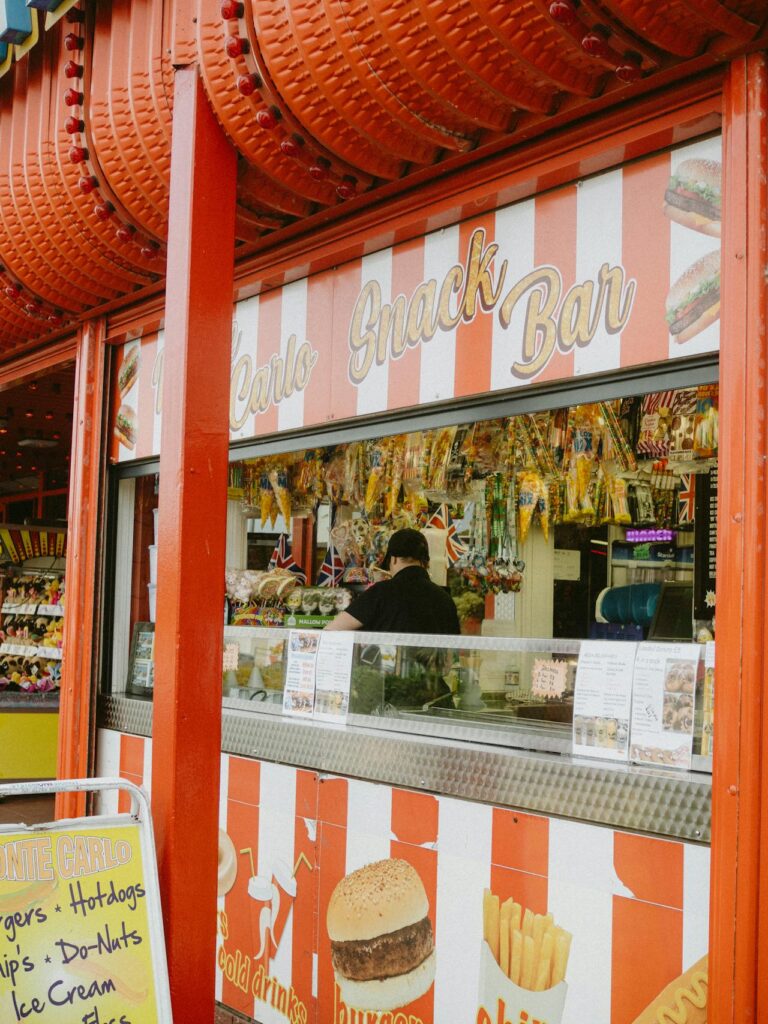
10. Add a Call-to-Action (CTA)
Don’t be afraid to include a call-to-action on the wrap. Phrases like “Join us for lunch!” or “Follow us on Instagram!” can create a sense of urgency. Encourage passersby to take action and engage with your food truck.
11. Test Your Design
Before you finalize your design, get feedback on it. Show the design to friends, family, or even loyal customers. A fresh pair of eyes can provide useful insights and may catch elements you might have missed.
12. Hire a Professional Designer
If you’re not confident in your design abilities, consider hiring a professional. A designer who specializes in wraps understands what works visually on a moving vehicle. They can help bring your vision to life, providing you with the best chance at catching customers’ attention.
Conclusion
A food truck wrap is more than just a design; it’s an opportunity to showcase your brand and attract customers. By knowing your brand, keeping it simple, using high-quality images, and focusing on the layout, you can create a wrap that not only stands out but also invites people to check out your delicious food.
Please check out our blog to find out the rest of the posts of this series on how to wrap a food truck where we discuss popular models of food trucks and how to install wraps according to specific box truck models in the market.

